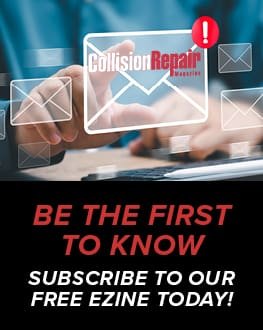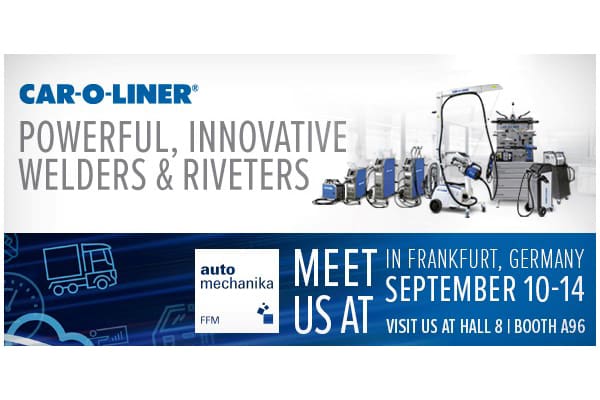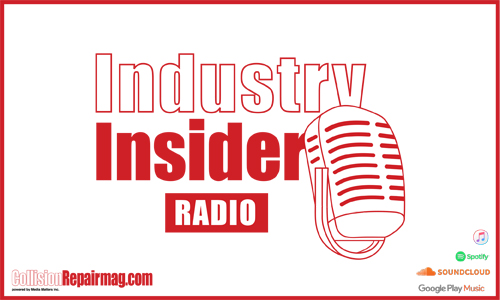Saskatoon, Saskatchewan — The dedicated collision repairers of Saskatchewan were in Saskatoon last week for the annual Saskatchewan Association of Automotive Repairers (SAAR) Fall Conference.
The event kicked off last Thursday with a golf tournament. Attendees spent the day on the stunning greens at the Dakota Dunes Golf Links, treated with visits from industry partners along the course before a turkey dinner in the evening.
As is tradition, Friday’s festivities started at 7 a.m. with a hot breakfast before the presentations began. First to the stage was Sharon Ashley and Jim Wraight of Bodyshop Connect, who delivered the software’s latest insights, including parts tracking via smartphone app and other in-program services; pre-close compliance systems; a refresher on the TechnicianConnect app’s features; new appointment calendar features—including a dedicate calendar for managing non-repair order related events—and more.


“You’re able to set up these non-RO related tasks, filter by user, filter by event type and more,” explained Wraight.
Next, Mike Gilliland and Jenica Bennett of AutoHouse Technologies took to the stage for their presentation, Metrics that Matter: The true drivers of efficiency and profitability in collision repair operations. The duo explained data-driven decision-making, emphasizing that collision centres need to consider not only the data available to them but also the bias of that data and the goal of utilizing that data.
“We need to be careful about data,” explained Gilliland. “It can be interpreted in a lot of different ways. It can be informative and beneficial, but it can also lead you down a path that turns to bad outcomes.”

Tom Bissonnette, director of SAAR, introduced the next session: a panel discussion between Scott Kucharyshen, Saskatchewan Polytechnic; Lori Gaspar of Sask Distance Learning; Brayden Neufeld of Parr Auto Body, representing Skills Canada; Janet Uchacz-Hart from the Saskatoon Industry-Education Council and Mark Edmunds from the Regina District Industry Education Council; Dave Flockhart of BETAG; and Mervin Armstrong from Swervin’ Mervin Cars.
“You’ve got a program here in Saskatchewan that can deliver an extra car a week, through an apprentice,” emphasized Flockhart, who has had significant partnerships with Sask Polytech classes in recent years.
The large panel spent an hour discussing the current situation regarding skilled trades adoption in Saskatchewan and touched on ways the industry can help promote a healthier ecosystem. The panel ended with crowd commentary.
Following a brief coffee break, Regen Replica Systems claimed the mic to educate attendees on their service offerings. The company also invited SAAR attendees to be part of its bodyshop industry plastic waste research and development study alongside Sask Polytech and SGI Salvage, wherein Regen hopes to gain insight on the “perfect market fit” and gain essential industry feedback.
Ryan Best of the Motor Safety Association was next to speak. As the new executive director of the Motor Safety Association, Best shared the latest offerings and insights for bodyshops to best manage the health and safety of their employees. He also touched on some up-and-coming trends he foresees in the sector.
“If you haven’t heard about sustainability at the bodyshop level yet, you are going to,” said Best.
Ciaran Downes from Saskatchewan Government Insurance (SGI) was up next for perhaps SAAR’s most anticipated conference session: an update on Saskatchewan industry metrics, SGI corporate transformation efforts and a joint technical committee update.
Downes started by pointing out that, provincially, repair cycle times are down considerably from 2022 and 2023 numbers, largely due to increased parts availability.
“We still have the COVID hangover,” he added. “But there are improvements on the horizon, as we can see.”
Looking at repaired claims, Downes highlighted that SGI has seen continual increases since 2019, primarily driven by labour costs, as well as in the “additional costs,” category, which Downes said is “mainly paint materials.”
“One of the biggest elements of our costs, outpacing labour costs, is parts. We’re looking for opportunities where we can manage premium and manage costs for customers on the parts side,” he added.
Downes also highlighted some major corporate changes, including the recent introduction of ProgiSync for internal scheduling. The next phase is to create and invite shops to participate in a provincial scheduling network; this phase is planned to launch in 2025.
Yanni Koutmos of Eagle MMS took the stage next to discuss cost inflations, the current market and how the company’s programs can help manage material cost concerns.
Pat Quinney of Quickfalls Collision, who experienced a fire at his collision centre in March 2024 of this year, was kind enough to educate SAAR attendees on his experience navigating the rebuilding process. The entire building was lost, and Quinney ran into head-scratching questions like: is your paint booth part of your building?

“Is it part of your building, or is it part of your equipment? It’s very well fixed to your building—bolted to the floor, it’s got fire suppression and all your HVAC mechanicals. That was bounced around on our claim—until the insurance company realized they couldn’t trigger our co-insurance clause.
“My suggestion to smaller operators: speak to your broker about it. Find out where that piece is to be categorized, as part of your building or as a piece of equipment. A new paint booth is going to cost, after installation, upwards of $250,000. If you have a building that’s under a million dollars in value on replacement cost, that’s going to trigger your co-insurance and your insurance company will be able to lessen the payout.”
The biggest headache of all, said Quinney, was the disposal of “hazardous materials” due to the type of fire. He found his cleanup costs were exacerbated considerably, due to asbestos and other chemical contamination.
“We hauled just shy of 500 tonnes of rubble to the dump, totaling $300,000. That came off my rebuild.”
The rest of the afternoon featured presentations from vendors to showcase the latest and greatest from 3M as well as a presentation on the world of salvage parts from Marty Coonan and Dayle Thys of LKQ Canada. Car-Part Pro and BGE Indoor Air Quality closed out the day of presentations, discussing industry parts trends; the environmental impact of used parts and the importance of air quality, respectively.
A lively trade show closed out this year’s Fall Conference. Stay tuned for further coverage in next week’s daily eZines.
The post Fall Festivities: Saskatchewan Association of Automotive Repairers hosts Fall Conference appeared first on Collision Repair Magazine.














